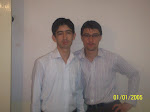What are the important leadership roles in the community?
Because he is the standard for Muslims in every time and place, the Prophet Muhammad continues to play a central leadership role within his community centuries after his death. Many Muslims look to his example and intentionally model their own lives on what he said and did as recorded in the hadith collections and other Islamic sources.Muhammad therefore remains the ideal figure within whose shadow all subsequent leaders must function and operate.
In the early period of Islamic history religious authority and political authority were often joined together and associated with one individual. This was considered to be in line with the precedent established by Muhammad, who was both a prophet of God and a statesman during his lifetime. For example, the “Rightly Guided Caliphs”—the four men who ruled the Islamic community after the death of the Prophet (632-661 CE)—were held to be the final authorities in all matters of religion and politics. As Islam spread during their reigns, they had a profound impact on shaping both the physical and spiritual dimensions of the emerging empire.
But this situation did not continue for long. For a variety of reasons it soon became clear that it would be better to separate religious authority from political authority, and that is the arrangement that continues to be operative in most of the Islamic world to the present day. Consequently, leadership in Islam is primarily exercised within the spiritual realm in a way that is similar to what is found in Judaism and Christianity.
But there are some key differences among the three faiths in this area. One of the most important is the lack of a clergy or institutional hierarchy in Islam. While there are authority figures in the religion, there is no equivalent to the priesthood or the rabbinate in Islam. Within the context of worship, the most important role is played by the imam, who serves as the prayer leader. Most mosques, especially large ones, have a permanent imam who functions in this capacity on a full-time basis.
In smaller mosques it is more common to rotate leaders from among the community so that no one person is identified with the role. The backgrounds and qualifications of imams vary considerably, and they function independently of each other. The lack of a hierarchy or level of authority above them—as seen, for example, in the Catholic Church, where the bishops are the superiors of priests—makes this autonomy and independence possible.
Beyond the area of ritual and worship, there are other individuals who function as leaders within the community, and some of these will be mentioned below. But when it comes to the daily lives of the vast majority of Muslims, it is the imam, more than anyone else, who is looked to as an authority figure. It should be noted, however, that there is some possibility for confusion over the precise meaning of the termimam because it means one thing to Sunni Muslims and another thing to Shi`a Muslims.
What has been described above more accurately reflects the practice and understanding of Sunnis, for whom imam is a generic term referring to any prayer leader.
For Shi`a Muslims, though, the word denotes a particular individual who is the leader of their community par excellence. The Shi`a believe so strongly that the Prophet Muhammad is the quintessential authority figure for Muslims that they maintain that only a descendant of the Prophet can properly lead them. For this reason they often refer to themselves as “the people of the house” (in Arabic, ahl al-bayt), an allusion to Muhammad’s genealogical line.
According to Shi`a belief, after the death of Ali, the fourth of the “Rightly Guided Caliphs” and the son-in-law of the Prophet, leadership was passed on to his two sons and then to their sons, forming an unbroken chain that could trace its roots back to Muhammad. Each of these leaders was called the imam, and he exercised complete authority over the Shi`a community during his lifetime. The chain came to an abrupt halt in the ninth century CE, when the twelfth imam had to go into hiding out of fear for his life. Shi`a Muslims believe he is still in hiding somewhere in the world and will return at some future point.
The reason why the twelfth imam was forced to flee was that Shi`a Muslims have often been oppressed by the majority Sunnis. In order to ensure his survival the imam was taken into hiding by God until he can claim the leadership of the entire Muslim community that is rightfully his. While most Shi`a believe it was the twelfth imam who went into hiding (and are therefore called “Twelvers”), there are a few sects that maintain it was actually the seventh imam. The entire community believes that in the interim between his departure and return, authority rests in a group of religious leaders among whom are the Ayatollahs, whose title literally means “sign of God.”
Friday, April 3, 2009
Subscribe to:
Post Comments (Atom)
Love is reckless
Love is reckless; not reason.
Reason seeks a profit.
Love comes on strong,
consuming herself, unabashed.
Yet, in the midst of suffering,
Love proceeds like a millstone,
hard surfaced and straightforward.
Having died of self-interest,
she risks everything and asks for nothing.
Love gambles away every gift God bestows.
Without cause God gave us Being;
without cause, give it back again.
Reason seeks a profit.
Love comes on strong,
consuming herself, unabashed.
Yet, in the midst of suffering,
Love proceeds like a millstone,
hard surfaced and straightforward.
Having died of self-interest,
she risks everything and asks for nothing.
Love gambles away every gift God bestows.
Without cause God gave us Being;
without cause, give it back again.

No comments:
Post a Comment